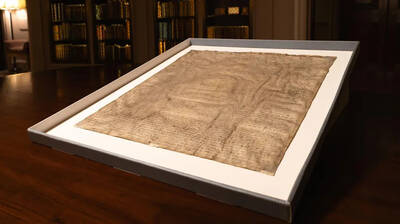A : Lately I’ve been staying up all night watching the World Cup.
B : Me too. I can’t keep from falling asleep at work.
A : I feel like falling asleep as well. I’m constantly drinking coffee to keep my wits together.
B : This kind of tournament only happens every four years, so it’s actually worth staying up all night to watch it.
A : 我最近都熬夜看世足賽。
B : 我也是,結果上班都忍不住打瞌睡。
A : 我也都好想睡覺,只好一直喝咖啡提神。
B : 不過這比賽四年才一次,值得熬夜觀賞。

A: Apart from Twice, hip-hop trio Black Eyed Peas, a folk music festa, Japanese virtual singer Hatsune Miku, and K-pop boyband NCT will all visit Taiwan. B: Black Eyed Peas once rocked Taiwan in 2006. I love their hits, such as “I Gotta Feeling,” “Boom Boom Pow” and “Where Is The Love?” A: The upcoming Taipei Dome Eastwave festa celebrating 50 years of folk music sounds like fun, too. B: The seven-hour-long concert is scheduled from 3pm to 10pm on Saturday. A: I hear over 60 artists are going to perform more than 100 unforgettable classic folk songs. A:

A document long considered an unofficial copy of the “Magna Carta” has been identified as a rare original issued by King Edward I in 1300. Tucked away in Harvard Law School’s library, the manuscript was acquired in 1946 for a mere US$27.50. Medieval history professors from King’s College London used ultraviolet light and spectral imaging to analyze the faded text. They found that the handwriting, wording, and word order perfectly match those of the six other surviving charters from that year. The Magna Carta was the first document to formally assert that the king is subject to the law. It remains a

A: Hit K-pop girl group Twice is going to stage a concert at the Kaohsiung National Stadium this weekend. B: And this will be Twice’s first show in Taiwan since their debut about 10 years ago. A: After conquering fans around the world, Taiwanese member Chou Tzu-yu is finally returning to her hometown. B: Member Na-yeon actually performed at the 7-Eleven Kaohsiung Beer Rock Festival in July. Jeong-yeon, Jih-yo and Chae-young also caused a global sensation by singing the megahit “Takedown” from Netflix’s animated blockbuster “KPop Demon Hunters.” A: We’re so lucky to see all nine members performing in Taiwan for the very first

A groundbreaking AI-powered pen developed by researchers at the University of California, Los Angeles (UCLA), could revolutionize the early diagnosis of Parkinson’s disease. This innovative device detects subtle changes in handwriting, a key indicator of the neurodegenerative disorder. The pen uses magnetic ink and a specialized tip to convert hand movements into electrical signals. These signals are then analyzed by an AI system, which can distinguish Parkinson’s-related handwriting patterns from healthy ones with over 95% accuracy. This low-cost, accessible technology holds promise for widespread screening, particularly in areas with limited medical resources. By enabling early detection and intervention, the